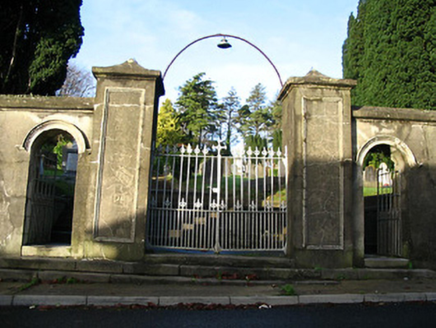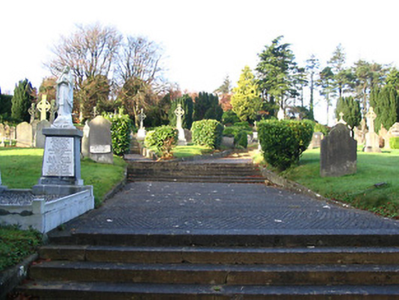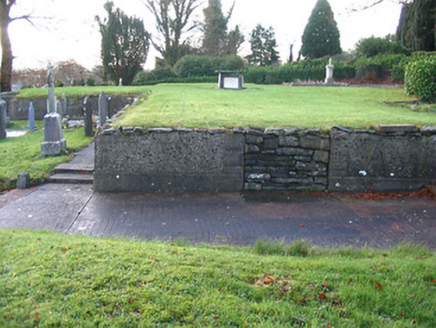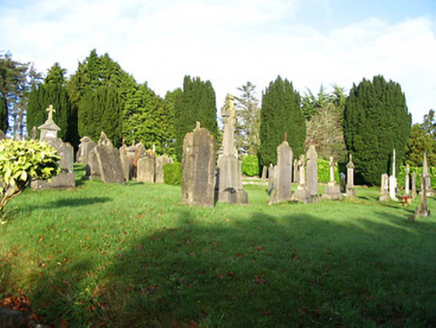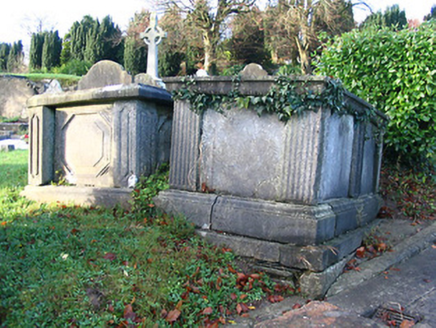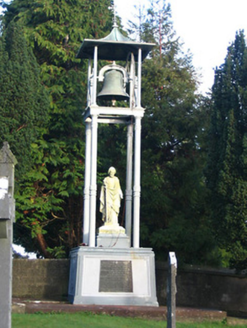Survey Data
Reg No
12319005
Rating
Regional
Categories of Special Interest
Architectural, Artistic, Historical, Social
Original Use
Graveyard/cemetery
In Use As
Graveyard/cemetery
Date
1800 - 2000
Coordinates
240900, 134647
Date Recorded
14/06/2004
Date Updated
--/--/--
Description
Graveyard with various cut-stone markers, post-1790-present. (ii) Remains of detached five-bay double-height Catholic church, built 1790, on a cruciform plan comprising three-bay double-height nave with single-bay double-height transepts to east and to west, and single-bay double-height chancel to south. Extended, 1813, probably with transepts completed. Demolished, post-1969. Unpainted rendered walls truncated, post-1969, to plinth level over random rubble stone construction with cut-limestone dressings including remains of rusticated doorcase. (iii) Freestanding belfry, pre-1903, comprising panelled tapered pedestal on a square plan with inscribed plaque, moulded capping supporting carved statuary, half-fluted pillars having decorative bas-relief detailing, cast-iron bell, and copper-clad swept pyramidal roof over having cross finial to apex. (iv) Gateway, pre-1840, to east on three cut-limestone steps comprising pair of unpainted rendered panelled piers with swept capping, wrought iron double gates having wrought iron lamp holder over, and unpainted rendered, ruled and lined flanking walls incorporating pair of round-headed pedestrian gateways with wrought iron gates having hood mouldings over.
Appraisal
A collection of artefacts representing an important element of the architectural heritage of Windgap on account of the associations with the earliest-surviving ecclesiastical complex in the locality: although superseded by a late twentieth-century counterpart the remains of a late eighteenth-century church have been retained as an aesthetically-pleasing landscape feature. An attendant graveyard incorporates a group of markers of artistic design merit exhibiting high quality stone masonry while a formally composed gateway incorporating early iron work presents an elegant feature enhancing the street presence of the site in the village.
